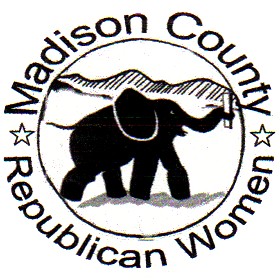|
|
Newsletter of the Madison County Virginia Republican Women
|
|



"By the way, the word democracy appears in none of our founding documents.
"The Founders of our nation recognized that we need government, but because the essence of government is force, and force is evil, government should be as small as possible. The Founders intended for us to have a limited republican form of government where human rights precede government and there is rule of law. Citizens, as well as government officials, are accountable to the same laws. Government intervenes in civil society only to protect its citizens against force and fraud, but does not intervene in the cases of peaceable, voluntary exchange."
Walter Williams
___________________________
We Believe . . .
That the free enterprise system is the most productive supplier of human needs and economic justice
That all individuals are entitled to equal rights, justice, and opportunities and should assume their responsibilities as citizens in a free society
That fiscal responsibility and budgetary restraints must be exercised at all levels of government
That the Federal Government must preserve individual liberty by observing constitutional limitations
That peace is best preserved through a strong national defense
That faith in God, as recognized by our Founding Fathers, is essential to the moral fiber of the Nation